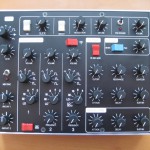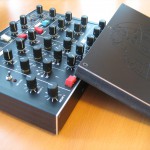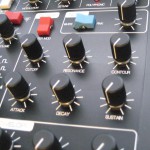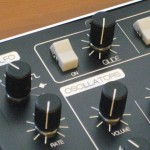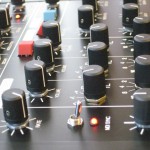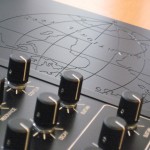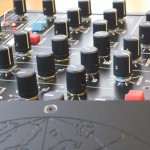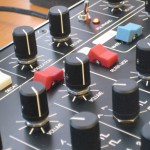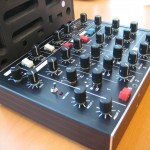The PMM
29th March 2012, (10 Comments)
The PMM was built for Mark B, Producer/Owner of International Feel Recordings. A massive gallery is below.
The controller is built specifically for version 2.0 of Arturia’s Minimoog V Virtual Instrument, which is in turn inspired from the original Minimoog. If you’re not familiar with Virtual Instruments, I’m sure this all feels quite “meta,” but it’s pretty common in music technology.
Mark B makes his living off music. He uses that particular Virtual Instrument extensively. He has very specific travel and MIDI control needs. In other words, his needs are a perfect fit for a custom controller. The PMM isn’t a luxury novelty to him. It’s a tool in his toolbox — one that took weeks of collaboration to conceptualize and design.
A bunch of anecdotes from the build are below. Scroll down further for tech details and pictures:
- International Feel Recordings is a damned fine label. I’ll describe it without getting into genre specifics (which thankfully, they defy). They make the kind of music that makes you feel you’re peeking into a world of people and places that are much cooler than you’ll ever be.
- Mark B found me without the benefit of my existing Rolodex in the music technology world. He discovered 60 Works thanks to Synthtopia’s posting of the Hale Micro Build Video. This is heartening. It means the business can attract clients on its own, instead of depending on the good graces of friends & colleagues.
- PMM stands for “Portable Memorymoog,” a cute joke about the MIDI & Polyphony functionality on that particular synth. I’m going to keep calling it the PMM to protect myself from the ire of the Moog folk. (Not that they’re particularly litigious. I just respect them too much to Bogart their name out of the blue.)
- Even though the end result of these projects is a box with buttons and knobs, the entire experience has much in common with contract graphic design or architecture work (as opposed to a factory or retail fulfillment experience). There were moments of great frustration and wonderful elation. A number of lovely concepts were canned or re-configured for the greater good. There were moments where we IM’ed so often that I jokingly referred to Mark B as my Temporary Work Wife.
A bit more on the controller:
- The lid is an exact “negative” of the knobs and buttons that stick out the top. It is kept in place by high-strength magnets at its base, and by additional magnets hidden under the panel of the controller.
- It’s smaller than it looks. The entire controller could fit on a Letter (or A4) piece of paper.
- It’s two UMC-32+Ms, chained together. It’s possible to fit all the I/O into a single UMC, but there were some specific MIDI CC requirements that forced a second board.
- There are indicator LEDs on two of the switches. They illuminate to match the behavior of the Virtual Instrument, but they’re NOT controlled by MIDI. They’re simply powered based on their position, then the position was rotated to match the user interface on the Virtual Instrument.
- (Getting pretty technical for a moment.) We managed a nifty trick with the Rate and Waveform selectors. The underlying component isn’t a rotary potentiometer, it’s a 6-position rotary switch. Instead of connecting each switch to a digital input, I wired a resistor “ladder” between the switches and hooked the entire unit up to an analog input. The result was a rotary switch that would “jump” to specific CC values based on its position. This significantly reduced the number of required inputs, and allowed for control of the Virtual Instrument without any sort of MIDI translation software.
- Confused at that last one? Here’s the bottom line: the Waveform and Rate selectors behave like they would in a synth (clicky knobs that stop directly at the indicators), instead of like in a MIDI controller (smooth knobs where you don’t know exactly where you are).
Mark B and I may end up selling these. Please contact me if you have any interest in buying one.


